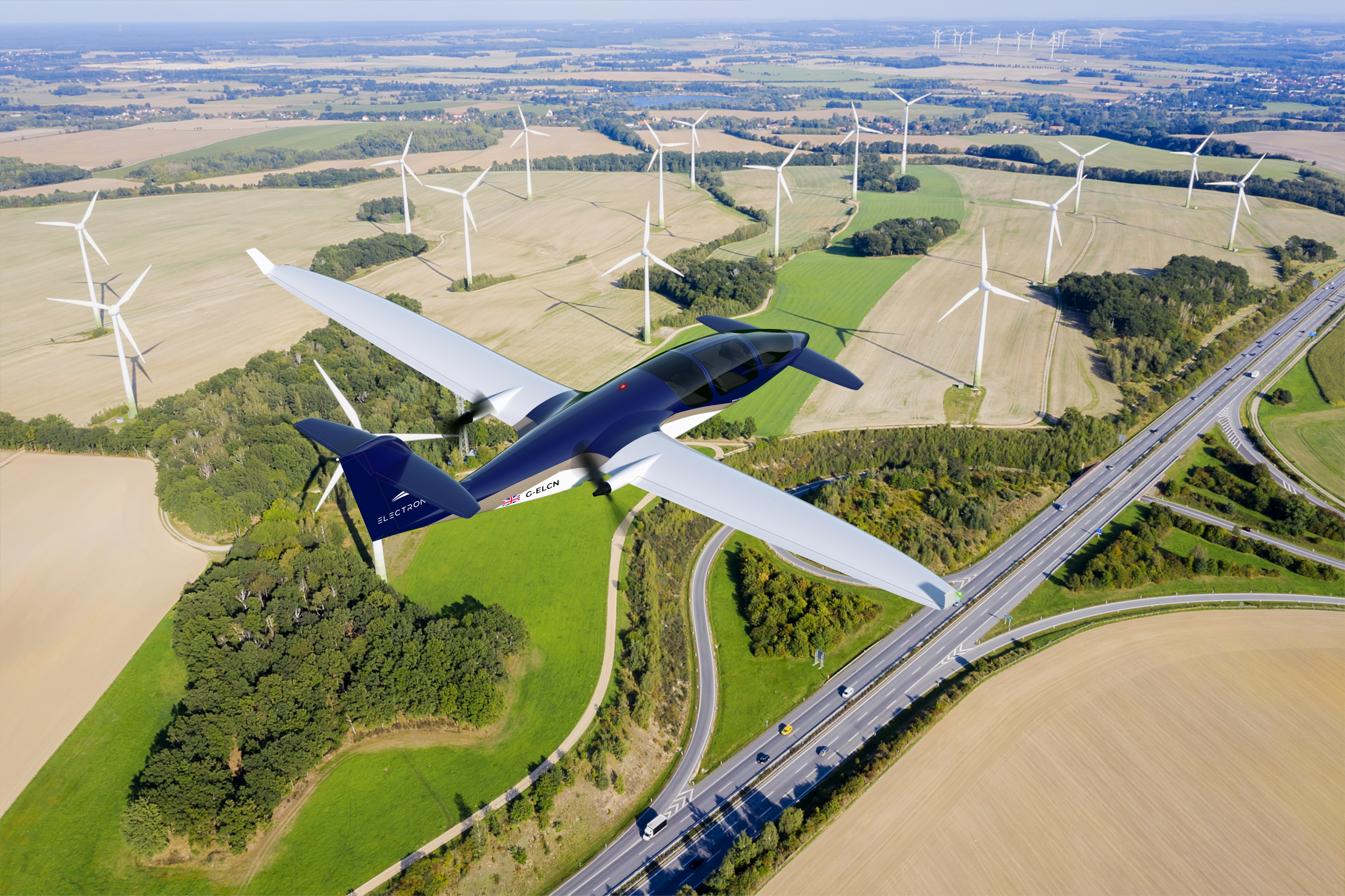
In 2026 it will happen: passengers can take an air taxi to and from Groningen Eelde Airport in the Netherlands. ELECTRON aviation will build air taxis that can seat four passengers. The company recently signed a letter of intent with Groningen Airport. “In 10 years we will have 30 hubs for air taxis, spread all over Europe,” says company founder and CEO Josef Mouris. How are the plans coming along? Mouris brought us up to speed.
A city trip to London, Berlin or Brussels: it is the ideal leisure activity for many. But if you take the train or car, you’re often on the road for half a day. Groningen Eelde Airport will be the first operational airport that ELECTRON aviation will use. The company makes it possible to provide flights within Europe with a range of 750 kilometers, completely emission-free.
This makes the company a pioneer in the field of sustainable flying. “In August, demonstration flights were already held with an electric two-seater from the Netherlands Aerospace Center (NLR). This flew a tour of various airports within the Netherlands,” says Mouris. “However, this was a two-seater for training purposes. Electric battery flights are emerging, and we are one of the first parties to develop aircraft to enable passenger flights.”
Read more about the electric battery aviation sector here
A solar farm and charging stations
Before electric flights can be flown from Eelde, however, there is still a lot to be done, both practically and on paper, Mouris explains. “It is an enormous amount of work to get the electric aircraft certified. We already have a self-developed two-seater that is flying abroad. Now we are busy getting the financing in place for the next phase.” Once that process is over, the practical part can begin. “We need to build the planes and install charging stations at the airport,” he says, meaning charging stations for both air traffic and cars: “We are aiming for 100 percent emission-free. So that also means that passengers must be able to come to the airport from their work or home in electric cars and that we only use 100 percent green electricity.”
Eelde has been working towards the goal of becoming the most sustainable airport in Europe by 2030 for some time. It is therefore the ideal location for a start-up like ELECTRON aviation to launch its business. “One of the reasons for us to start at Eelde was the large solar park that is already there, more than enough to supply all our flights.” In addition, hydrogen will soon be available at the airport.
The air taxi service also adds a lot to the lives of people living in the North. “Now they usually have to go to the Schiphol airport in Amsterdam to catch a plane. This is a sparsely populated area, but our aircraft do not need to fill 190 seats. One to four passengers is sufficient. Eelde will perhaps serve as an example for the remaining 2,700 plus airports in Europe.”
Read an interview with Meiltje de Groot, director of Groningen Eelde Airport

Tickets starting at 225 euros
Is such an air taxi actually affordable for the average citizen? “It’s going to cost about 900 euros for the four of us to fly a distance of about 400 kilometers. So it is pricey,” admits Mouris. “But if you share the price with the other passengers, it’s still doable, especially for the business traveler who now still travels by private jet or books business class tickets. Because initially, the air cabs are especially attractive to these travelers as well.” In addition, passengers traveling from Groningen to cities in Europe such as Copenhagen spend a day longer traveling by train and/or via Amsterdam’s Schiphol airport, which also has a financial benefit. “Don’t forget: time is money. It is possible with the air taxi to be at your destination within two hours.”
In the long run, prices will start to fall, Mouris predicts. “I expect that eventually we will compete with prices of low-cost airlines and even with the train. But bear in mind that at the moment kerosene is hardly taxed or not taxed at all, so airlines can fill up for 35 euro cents per liter. That will hopefully change.”
Further down the road
Developments in electric batteries are currently proceeding at lightning speed. In 10 years, it should also be possible to extend the range from 750 to 1,500 kilometers, Mouris predicts. “Within 10 years, battery-powered electric aircraft will fly farther than hydrogen-powered aircraft,” he says. The start-up is therefore sticking with electric-only flights for the foreseeable future. “The energy efficiency of battery-electric flying is many times better than hydrogen. The batteries are easy to recycle and in addition, flying on electric batteries is much cheaper; see also the automotive sector. But never say never: as long as the air traffic of the future is 100 percent emission-free and on top of that, commercially viable, I’m all for it.”
Impact
And where will ELECTRON aviation be in 10 years? “By then we will have about 30 hubs for air taxis, spread across Europe. We will have 1,000 aircraft in our fleet by then. That means that by the end of the century we will have removed some 337,000 tons of CO2 from the mobility sector with our services. In doing so, we are assuming 155 grams of CO2 per passenger kilometer that people now emit on average in the mobility sector.” Josef points out that it is not just about emissions from aviation, but also road traffic. “There are more than a billion cars in the world that we need to replace compared to only 30,000 planes and there is a huge shortage of clean energy. So aviation can contribute enormously to accelerate the energy transition. I think that’s a goal worth pursuing!”
Read other stories about Groningen here

